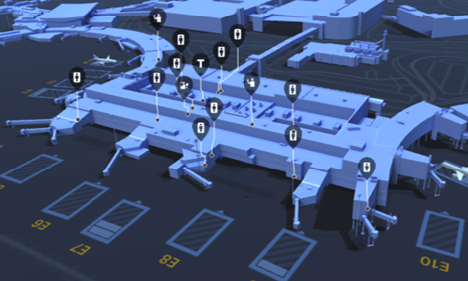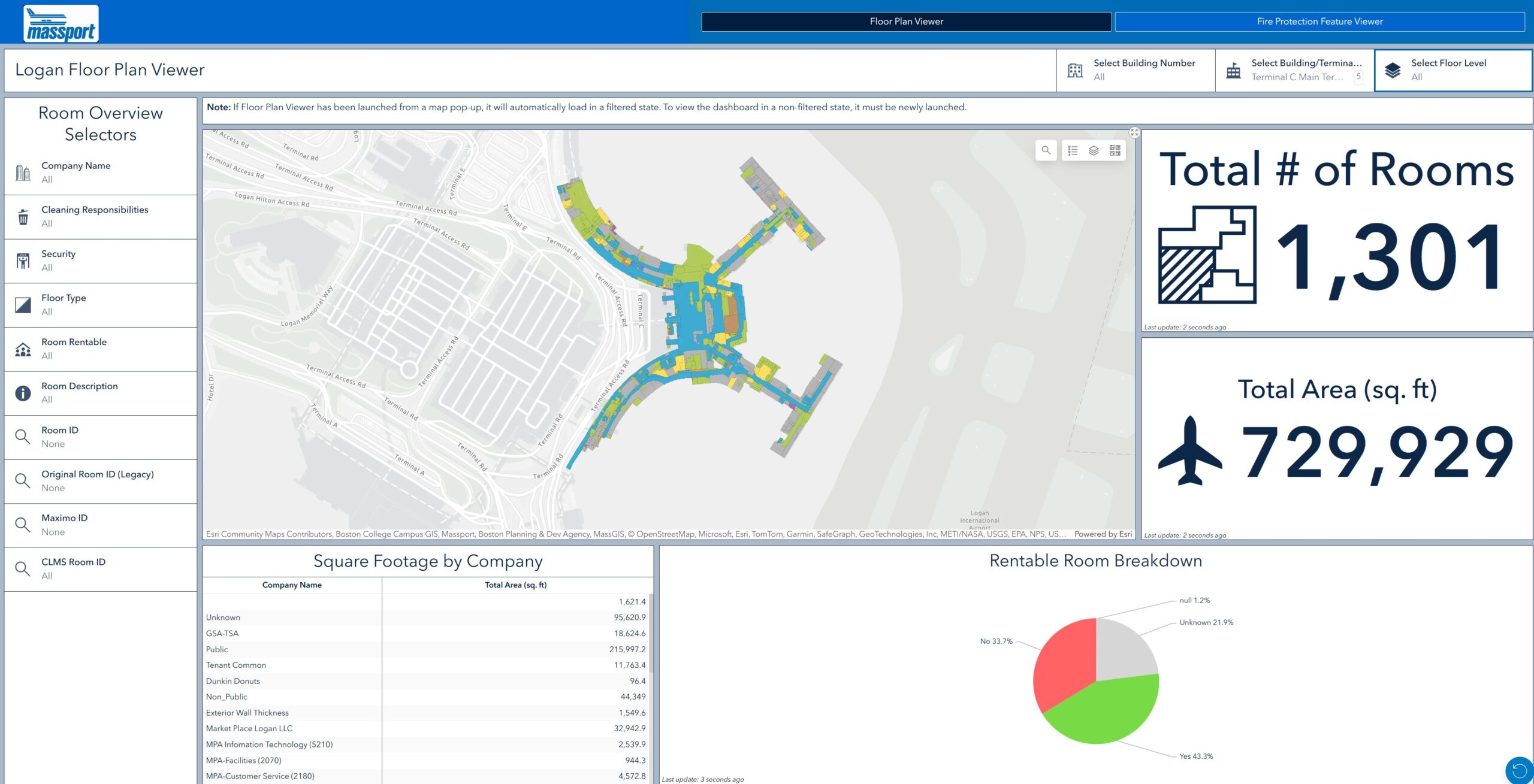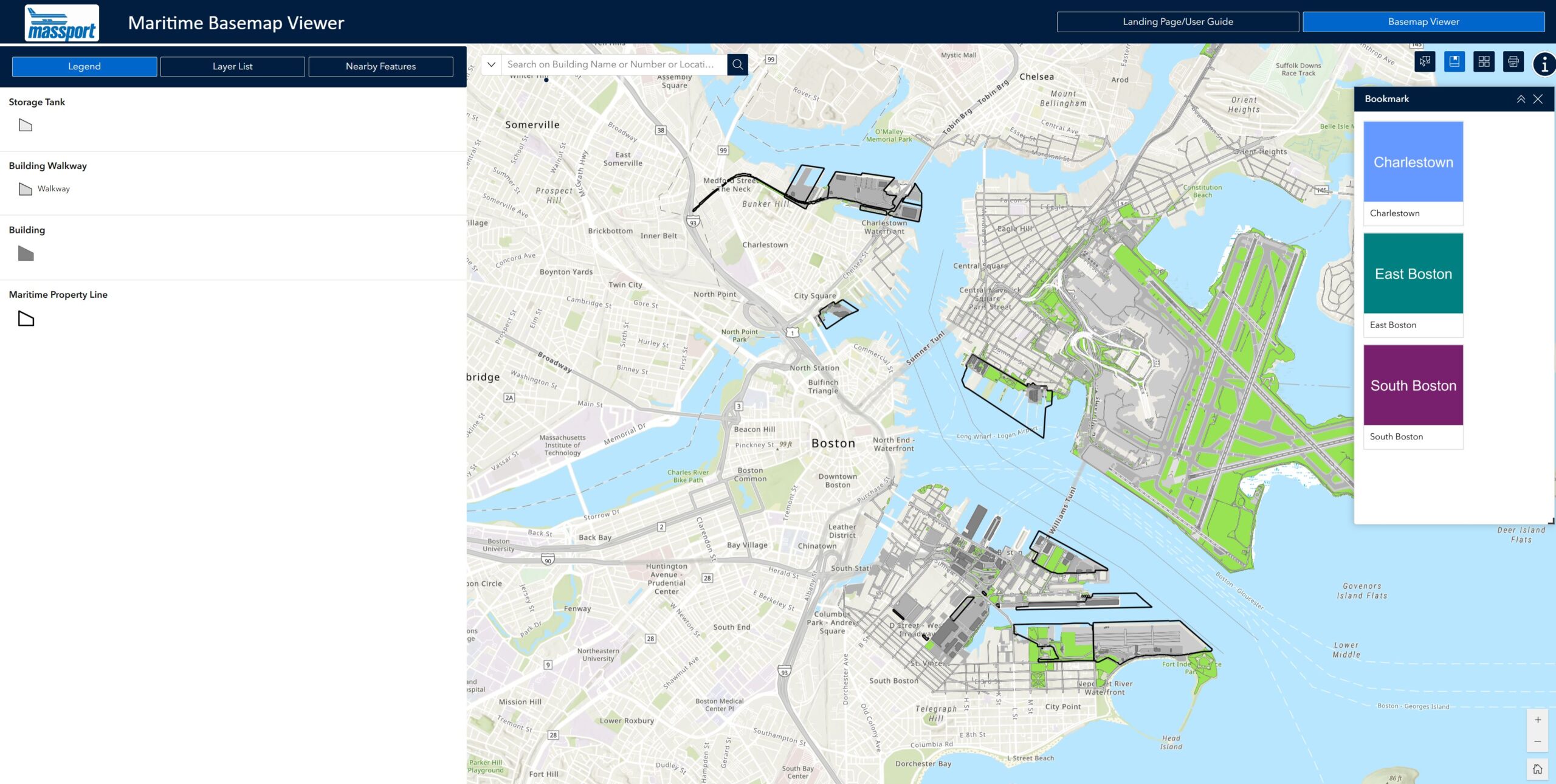
Massport's Digital Transformation
How the Massachusetts Port Authority is leveraging leading-edge technologies and methodologies to build a holistic understanding of its buildings, systems and infrastructure assets
By Mark Ricketson, Deputy Director, Design Technologies Integration Group | Massachusetts Port Authority
The Massachusetts Port Authority, one of the nation’s most dynamic transportation hubs, is experiencing unprecedented growth across our entire enterprise, including our Maritime facilities and our three airports: Boston Logan International Airport, Worcester Regional Airport and Hanscom Field.
In response to increased demand for our facilities and with an eye to the future, our board of directors approved a historic $3.8 billion FY25-FY29 Capital Investment Plan (CIP), to modernize and enhance critical facilities.
Efficiently and effectively managing the unprecedented scope of development and renewal across our organization demands a comprehensive, forward-thinking and data-driven approach. To meet this need, Massport’s Digital Technologies Integration Group (DTIG) is spearheading multiple initiatives to create a holistic digital representation of all facilities and assets.
These initiatives enable us to manage and assess all our facilities through a centralized digital platform. These actions will enhance our infrastructure management, maximize stakeholder value and ensure seamless operations in an increasingly complex and rapidly evolving transportation landscape.
Our digital transformation efforts are organized into several key areas:
- Virtual Design and Construction/Building Information Modeling (VDC /BIM)
- Geographic Information Systems (GIS)
- Enterprise Asset Management (EAM)
- Data Management, Integration and Governance
Each of these is critical to building a comprehensive digital understanding of Massport’s infrastructure.
Creating digital blueprints for the future
Virtual Design and Construction (VDC) and Building Information Modeling (BIM) are foundational to our digital transformation, providing the tools and processes to create and manage digital representations of our physical assets. Our work in this area is guided by the 2024-2029 VDC Roadmap, which visually depicts the VDC framework and its alignment with Massport's business objectives.
Massport is setting the framework for BIM implementation across the organization through the development of VDC/BIM Guidelines, Roadmap and Standards. This foundational project establishes the protocols and standards that ensure consistency and interoperability in our BIM workflows. To ensure these workflows are effective, Massport is undertaking BIM Review, Assessments and Recommendations. This initiative focuses on evaluating and improving existing BIM data deliverables and workflows to identify areas to enhance optimization, efficiency and accuracy.
The practical application of these standards and assessments is realized in projects such as the Terminal C Scan to BIM Prototype. In this project, we are prototyping the use of scan-to-BIM technology to create BIM models of existing structures. This enables more accurate as-built documentation and supports renovation and expansion projects. Massport is scaling up the use of this technology through the Scan-BIM project, which will create digital models for a majority of Massport buildings, providing a comprehensive digital inventory of our facilities to support asset management and planning.
 Additionally, Massport is implementing the Autodesk Construction Cloud to facilitate design and construction model review and collaboration. Autodesk Construction Cloud (ACC) is a cloud-based project management platform that brings the project team to one location for documentation and coordination. ACC's features include model coordination, which helps identify issues and reduce rework before construction begins. It also offers document management, centralizing all project documents in one place for easy access and management. ACC also integrates with Power BI for deeper analysis of collected data, providing insights into project health metrics and trend analysis. By leveraging ACC, Massport ensures that project data deliverables are provided in a timely manner and comply with standards, enhancing collaboration and efficiency across all projects.
Additionally, Massport is implementing the Autodesk Construction Cloud to facilitate design and construction model review and collaboration. Autodesk Construction Cloud (ACC) is a cloud-based project management platform that brings the project team to one location for documentation and coordination. ACC's features include model coordination, which helps identify issues and reduce rework before construction begins. It also offers document management, centralizing all project documents in one place for easy access and management. ACC also integrates with Power BI for deeper analysis of collected data, providing insights into project health metrics and trend analysis. By leveraging ACC, Massport ensures that project data deliverables are provided in a timely manner and comply with standards, enhancing collaboration and efficiency across all projects.
Enhancing spatial awareness and resilience
By providing crucial spatial context, Geographic Information Systems (GIS) empower us to effectively visualize, analyze and manage our infrastructure assets within their geographic locations. Our ongoing GIS initiatives are strengthening this foundation by modernizing system configurations, creating a more intuitive GIS interface, deploying mobile applications for field data collection and enhancing the precision and accessibility of spatial data with updated basemaps.


Logan Airport Floor Plan Viewer and Basemap application with a user friendly interface.
GIS also is a powerful tool in bolstering our resilience planning efforts. Analyzing spatial data allows us to proactively address risks posed by climate change, natural disasters and other potential disruptions. Massport is using GIS to visualize and analyze its NetZero initiatives through the NetZero GIS Experience Builder. The tool tracks key sustainability metrics, supporting efforts to reduce the agency’s environmental footprint.
Recognizing the importance of accurate and reliable utility information, Massport is undertaking a comprehensive Utility Network GIS Data Assessment. This evaluation aims to thoroughly analyze and refine the integrity, consistency and connectivity of our utility network data within the GIS. By identifying and rectifying data discrepancies or inefficiencies, this assessment will pave the way for improved data management practices, ensuring that our utility information is accurate, accessible and usable across various departments.
This critical groundwork lays the foundation for the potential future deployment of an advanced ArcGIS Utility Network. Implementing such a system unlocks powerful capabilities for modeling our complex water and other utility networks with greater precision, enabling more sophisticated analyses, optimized asset management, enhanced outage response, and ultimately, more efficient and resilient utility operations.
Maximizing infrastructure lifecycle value
Effective asset management is crucial for maximizing the lifecycle value of our infrastructure. Our initiatives in this area are guided by the Asset Management Strategic Plan, which defines our asset management objectives, strategies and processes. To support this plan, Massport is conducting a comprehensive Massport Infrastructure Condition Assessment (MICA).
The MICA Building Condition Assessment (BCA) systematically evaluates the condition of over 200 buildings across multiple disciplines, including architectural, structural, mechanical, electrical, and plumbing systems, enabling us to prioritize maintenance and renewal activities effectively.
Simultaneously, the MICA Utility Condition Assessment (UCA) is underway to evaluate the condition of approximately 85,936 utility assets across seven utility systems at six Massport facilities. This assessment includes desktop evaluations and on-site field investigations to gather critical information about the age, condition, capacity and redundancy of our utility infrastructure. The data collected is essential for managing and maintaining our utility infrastructure, ensuring efficient operations and supporting strategic planning.
As part of the MICA 2026 activities, additional infrastructure are being evaluated and prioritized to continue condition assessments. This ongoing effort aims to produce a strategic awareness of Massport's critical infrastructure. By establishing baseline conditions, Massport can make informed decisions about maintenance, capital renewal and resilience planning, ultimately enhancing the value and longevity of our infrastructure.
Ensuring data accuracy and accessibility
Effective data management, integration and governance ensure that our digital information is accurate, reliable and accessible. Our initiatives in this area include a Floor Plan Data Assessment and Maintenance Procedures project, focused on ensuring the accuracy and consistency of floor plan data. These projects ensure effective space management, wayfinding and emergency response. Massport also established data governance, defining the overall management of the availability, usability, integrity and security of data within DTIG. This encompasses the policies, procedures and standards that define how data is collected, stored, used and disposed of.
Outcomes
Massport’s digital transformation initiatives are delivering tangible results.
-
- The 2024-2029 VDC Roadmap is setting the direction for project delivery, enhanced information management and asset lifecycle innovation.
- The implementation of a centralized digital platform is providing a holistic view of all facilities and assets, enabling more informed decision-making.
- Mobile apps have improved the speed and accuracy of data collection, while providing real-time access to information in the field.
Shaping the future of digital infrastructure
Massport is dedicated to advancing technology-driven infrastructure management. Through initiatives like updating VDC and BIM standards and leveraging field technologies to create a digital representation of our facilities, Massport strives to enhance operational efficiency and ultimately position our organization for future growth. By continuing to innovate, Massport aims to maintain its commitment to modern, efficient and resilient transportation infrastructure.
ABOUT THE AUTHOR
 Mark Ricketson
Mark Ricketson
Deputy Director, Digital Technologies Integration Group
Massachusetts Port Authority
Mark Ricketson is the Deputy Director for the Digital Technologies Integration Group within Massport’s Department of Capital Programs and Environmental Affairs. His role involves overseeing the integration of advanced technologies to enhance Massport’s infrastructure and operations. He is a key figure in developing and implementing the Massport Infrastructure Condition Assessment (MICA) program, which assesses the condition of buildings and utilities, incorporating sustainability and energy efficiency considerations.
Contact him at [email protected].
